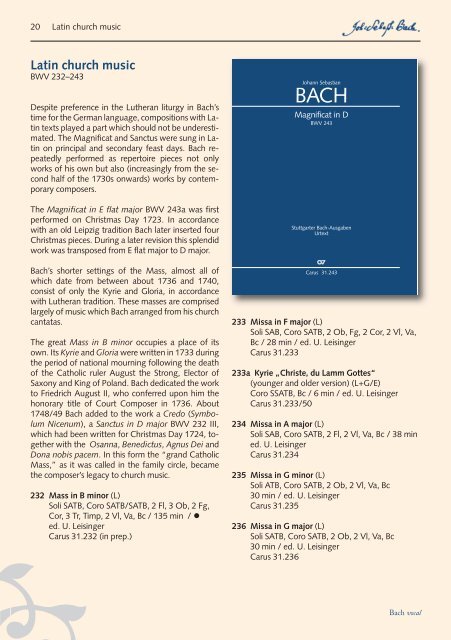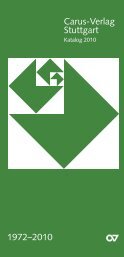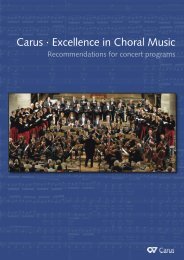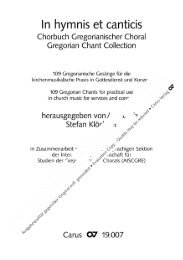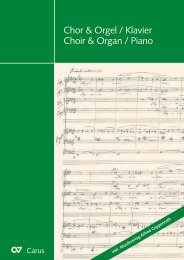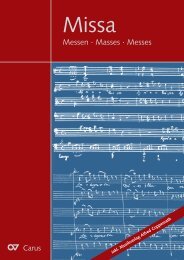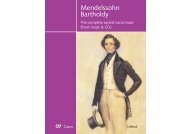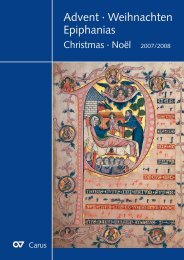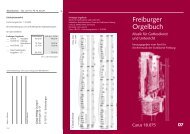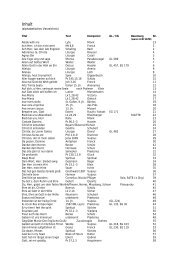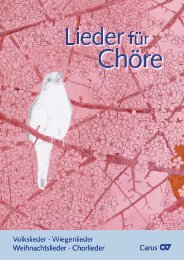Cantatas · Masses · Oratorios Passions · Motets
Cantatas · Masses · Oratorios Passions · Motets
Cantatas · Masses · Oratorios Passions · Motets
Create successful ePaper yourself
Turn your PDF publications into a flip-book with our unique Google optimized e-Paper software.
20 Latin church music<br />
Latin church music<br />
BWV 232–243<br />
Despite preference in the Lutheran liturgy in Bach’s<br />
time for the German language, composi tions with Latin<br />
texts played a part which should not be underestimated.<br />
The Magnificat and Sanctus were sung in Latin<br />
on principal and secondary feast days. Bach repeatedly<br />
performed as repertoire pieces not only<br />
works of his own but also (increasingly from the second<br />
half of the 1730s onwards) works by contempo<br />
rary com posers.<br />
The Magnificat in E flat major BWV 243a was first<br />
performed on Christmas Day 1723. In accordance<br />
with an old Leipzig tradition Bach later inserted four<br />
Christmas pieces. During a later revision this splendid<br />
work was transposed from E flat major to D major.<br />
Bach’s shorter settings of the Mass, almost all of<br />
which date from between about 1736 and 1740,<br />
consist of only the Kyrie and Gloria, in accordance<br />
with Lutheran tradition. These masses are comprised<br />
largely of music which Bach arranged from his church<br />
cantatas.<br />
The great Mass in B minor occupies a place of its<br />
own. Its Kyrie and Gloria were written in 1733 during<br />
the period of national mourning following the death<br />
of the Catholic ruler August the Strong, Elector of<br />
Saxony and King of Poland. Bach dedicated the work<br />
to Friedrich August II, who conferred upon him the<br />
honorary title of Court Composer in 1736. About<br />
1748/49 Bach added to the work a Credo (Symbolum<br />
Nicenum), a Sanctus in D major BWV 232 III,<br />
which had been written for Christmas Day 1724, together<br />
with the Osanna, Benedictus, Agnus Dei and<br />
Dona nobis pacem. In this form the “grand Catholic<br />
Mass,” as it was called in the family circle, became<br />
the composer’s legacy to church music.<br />
232 Mass in B minor (L)<br />
Soli SATB, Coro SATB/SATB, 2 Fl, 3 Ob, 2 Fg,<br />
Cor, 3 Tr, Timp, 2 Vl, Va, Bc / 135 min / �<br />
ed. U. Leisinger<br />
Carus 31.232 (in prep.)<br />
Johann Sebastian<br />
BACH<br />
Magnificat in D<br />
BWV 243<br />
Stuttgarter Bach-Ausgaben<br />
Urtext<br />
Carus 31.243<br />
233 Missa in F major (L)<br />
Soli SAB, Coro SATB, 2 Ob, Fg, 2 Cor, 2 Vl, Va,<br />
Bc / 28 min / ed. U. Leisinger<br />
Carus 31.233<br />
233a Kyrie „Christe, du Lamm Gottes“<br />
(younger and older version) (L+G/E)<br />
Coro SSATB, Bc / 6 min / ed. U. Leisinger<br />
Carus 31.233/50<br />
234 Missa in A major (L)<br />
Soli SAB, Coro SATB, 2 Fl, 2 Vl, Va, Bc / 38 min<br />
ed. U. Leisinger<br />
Carus 31.234<br />
235 Missa in G minor (L)<br />
Soli ATB, Coro SATB, 2 Ob, 2 Vl, Va, Bc<br />
30 min / ed. U. Leisinger<br />
Carus 31.235<br />
236 Missa in G major (L)<br />
Soli SATB, Coro SATB, 2 Ob, 2 Vl, Va, Bc<br />
30 min / ed. U. Leisinger<br />
Carus 31.236<br />
Bach vocal


